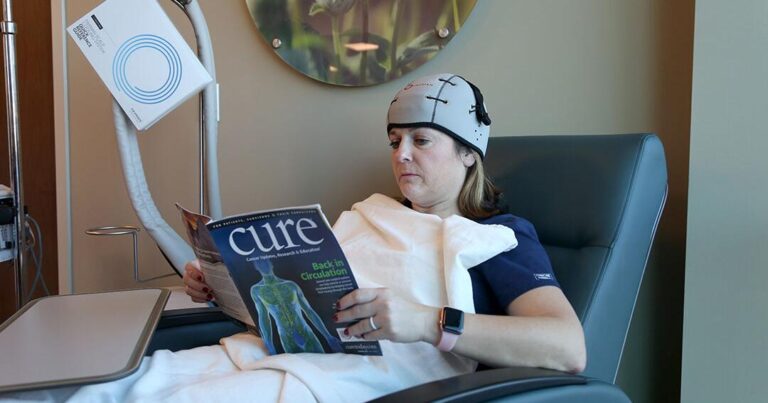OLEAN — For many cancer patients undergoing chemotherapy, the biggest fear during the treatment process is losing their hair.
Now, chemotherapy patients at Olean General Hospital and Bradford (Pennsylvania) Regional Medical Center can control hair loss with a groundbreaking scalp-cooling treatment.
Developed by a British family who know first-hand what hair loss caused by cancer treatment is like, the Paxman Scalp Cooling System can help reduce hair loss during chemotherapy.
Scalp cooling (also known as cold cap therapy) has been clinically proven to reduce one of the most dreaded side effects of chemotherapy: hair loss. Scalp cooling not only reduces hair loss, but it also protects hair follicles, helping hair grow back faster.
Kaleida Health facilities OGH and BRMC are among the first in the country to be able to bill patients’ insurance companies directly, said Joseph Fuglewicz, marketing director for the two hospitals, allowing more people to have access to scalp cooling as an option for managing side effects alongside anti-nausea medications and managing neuropathy and immunosuppression.
Any costs not covered by insurance will be paid for with funds provided by the Olean General Hospital Foundation and the Bradford Hospital Foundation, Fuglewicz said.
This option is available to patients receiving chemotherapy at Barry Street Health Center or BRMC in Olean.
“Patients undergoing chemotherapy must deal with many physical and psychological effects. Hair loss is a major concern and leaves many patients feeling like they are losing their identity,” said Dr. Hasan Rizvi, medical oncologist at OGH/BRMC. “Scalp cooling gives patients some control over side effects that are unavoidable with some treatments.”
The website coldcap.com, which supports people considering or using scalp cooling, explains the treatment process.
Chemotherapy works by targeting all rapidly dividing cells in the body. Hair is the second fastest dividing cell, which is why many chemotherapy drugs cause hair loss. The hair follicles in the anagen phase are attacked, causing hair loss about two weeks after chemotherapy treatment begins.
The damage that chemotherapy does to hair follicles can be reduced with scalp-cooling therapy, also known as a “cold cap,” which works by lowering the temperature of the scalp by a few degrees just before, during, and after chemotherapy treatment.
Cooling the scalp to prevent hair loss has been around for a while, says Saranya Chamsuri, M.D., an oncologist at the Mayo Clinic in Jacksonville, Fla. In the past, people could keep their scalp cool during chemotherapy using just ice packs or a cap placed in dry ice, but the caps had to be changed frequently to keep them cool.
But in 2015, the U.S. Food and Drug Administration approved computerized caps that circulate a cold liquid inside and keep the cap’s temperature at about 32 degrees Fahrenheit. These caps also have covers that keep the cap in place and maintain a constant temperature.
When your scalp gets cold, your blood vessels constrict, reducing blood flow to your hair follicles, meaning less chemotherapy drugs can reach the hair follicle cells. The cold also makes your hair follicle cells less active, so the chemotherapy drugs don’t get to them as quickly.
“We would like to express our sincere gratitude to our local Kids & Cancer organization for pitching the idea for scalp-cooling therapy and providing the funding to get the program started,” said David Monroe, BRMC’s chief administrative officer. “Alopecia caused by chemotherapy can negatively impact self-image, compounding an already difficult experience.
“Scalp cooling gives patients hope, control and normalcy,” he said.

